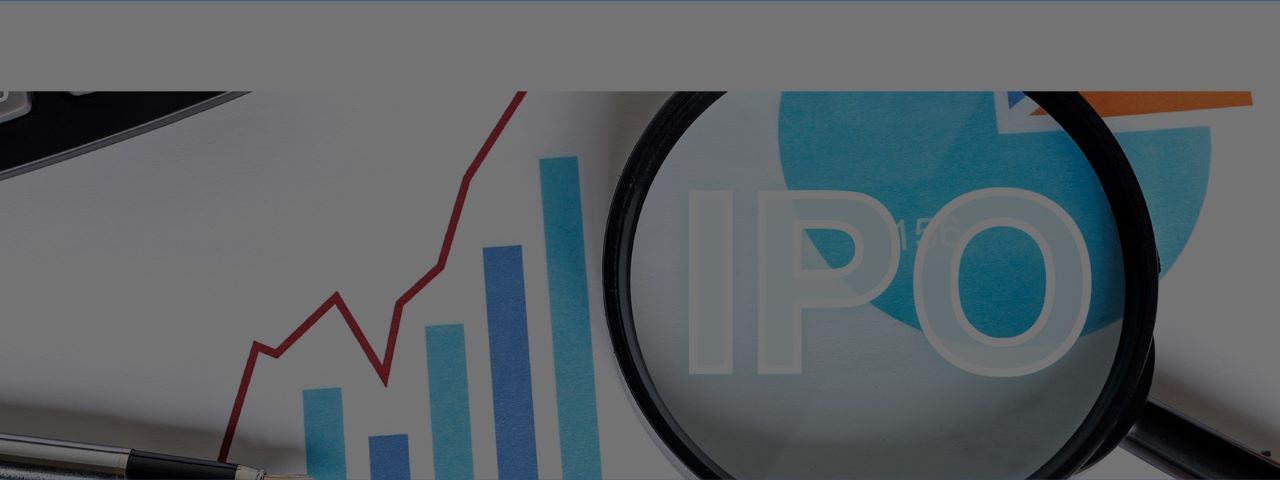
IPO Outlook: Fed Policy and Market Readiness
October 30, 2025
The changing IPO market outlook and the rise of innovative financial strategies have reshaped how companies approach initial public offerings (IPOs). Today, organizations seeking to go public are no longer confined to the traditional IPO framework, though it remains the most common route.
This article provides a high-level overview of the evolving IPO landscape, including traditional IPOs, Direct Public Offerings (DPOs), and SPAC transactions. Stay with us through the end, where we’ll highlight a key strategic consideration that pre-IPO companies should evaluate when preparing for life as a public company.
Could Federal Reserve Rate Cuts Spark the Next IPO Cycle?
The Federal Reserve lowered interest rates most recently on October 29, 2025, by a quarter of a percentage point. This was its second consecutive cut following a similar reduction on September 17, 2025.
A U.S. Federal Reserve interest rate cut can often help jumpstart the next wave of IPOs. Lower rates typically create more favorable conditions for both companies planning to go public and the investors buying into those offerings.
How a Rate Cut Affects the IPO Market
- Lower borrowing costs for companies: For companies considering an IPO, reduced interest rates make borrowing for growth and investment cheaper. This can enhance future earnings and cash flow, driving higher valuations and more attractive offerings for investors.
- Higher investor appetite for risk: When safer assets like bonds and savings accounts yield less, investors seek higher returns in equities and IPOs. This increased risk appetite can boost demand for new listings and support stronger stock prices.
- Increased market valuations: Falling rates reduce the discount rate used in valuation models, increasing the present value of a company’s future cash flow. This often translates into higher IPO valuations.
- Improved market sentiment: A Fed rate cut signals confidence in the economy and a willingness to stimulate growth. This can foster optimism in the markets, creating a supportive backdrop for IPO activity.
- A more active M&A market: Lower borrowing costs make it cheaper for large corporations to pursue mergers and acquisitions. Increased M&A activity can set valuation benchmarks for private companies, accelerating their readiness for an IPO.
- Geopolitical outlook: Global political instability, trade tensions, or regulatory uncertainty can disrupt market confidence, impact capital flows, and delay IPO activity, particularly for companies with international operations or supply chains.
Potential Counteracting Factors
While low interest rates generally support IPO activity, a rate cut alone doesn’t guarantee a surge in offerings. Several additional factors influence IPO momentum:
- Initial IPO performance: Weak post-IPO performance can temper investor enthusiasm and delay future offerings.
- Investor discipline: After periods of market exuberance, investors often demand stronger fundamentals and clearer profitability paths, not just rapid growth potential.
- Economic uncertainty: If rate cuts are driven by slowing growth, companies may hesitate to enter volatile markets.
- Job market conditions: A weakening job market can signal broader economic stress, reducing confidence among both investors and issuers and potentially slowing IPO activity.
The Evolving Types of IPOs
Historically, there was one standard way to go public, the traditional IPO. Today, however, new pathways such as Direct Public Offerings (DPOs) and Special Purpose Acquisition Companies (SPAC) transactions offer alternative routes to the public markets.
Traditional IPOs: The Classic Path to Going Public
A traditional IPO involves several key steps. The company partners with investment banks (underwriters) that assess valuation, determine the offering price, and purchase shares to resell to the public.
Next comes the IPO roadshow, a marketing campaign where company leadership presents financials, growth prospects, and value propositions to institutional investors.
The goal is to build an order book and gauge investor demand. While traditional IPOs benefit from expert underwriting and credibility, they also entail significant costs and extensive regulatory requirements.
DPOs – Direct Public Offerings: Skipping the Underwriter
A Direct Public Offering (DPO) allows a company to list its shares directly on a national exchange such as the NYSE or Nasdaq, bypassing underwriters entirely. Existing shareholders, including founders, executives, and employees, can sell stock directly to the public.
DPOs typically provide liquidity for existing shareholders rather than raising new capital, as no new shares are issued.
For established companies with strong brand recognition, DPOs can be appealing due to lower costs and greater inclusivity, allowing retail investors to participate from day one. However, the absence of underwriting support can lead to higher early-stage volatility.
SPAC Transactions: A Faster but Riskier Route to the Public Markets
SPACs (Special Purpose Acquisition Companies) surged in popularity between 2020 and 2022 as an alternative to traditional IPOs and DPOs. A SPAC is a shell company formed to acquire or merge with a private company, thereby taking it public.
The process begins when the SPAC raises funds through its own IPO, placing proceeds in a trust. Once it identifies a target company, it merges with that entity, often more quickly than a traditional IPO.
While SPACs offer speed and pricing certainty, they also carry risks tied to valuation uncertainty and the quality of the merged company’s management team.
The SPAC Process in Two Phases
- Phase 1: The SPAC IPO
The SPAC is formed and goes public, raising funds with the sole intent to acquire a private company within a set timeframe (typically 18 to 24 months). - Phase 2: The De-SPAC Transaction
The SPAC identifies and merges with a target company, which then replaces the SPAC as the publicly traded entity.
Key Strategic Consideration: Equity Plan Readiness Before Going Public
Beyond selecting the right IPO pathway, companies must prepare their equity compensation plans for the transition to public status. One crucial decision is whether to adopt new plans or modify existing ones while still private.
Late-stage private companies can amend their equity plans, providing a valuable window to optimize design and flexibility ahead of going public. Among these adjustments, adding an evergreen provision is a key consideration.
Evergreen Provisions: Ensuring Long-Term Equity Plan Sustainability
Just over 60% of companies adopt an evergreen provision before going public (2024 Initial Public Offering (IPO) Compensation Report, Alvarez & Marsal) underscoring the value of these provisions in maintaining equity plan flexibility.
An evergreen provision automatically adds a fixed number or percentage of shares to a stock plan annually, ensuring a steady supply for equity awards without requiring additional shareholder approval.
However, evergreen provisions can face resistance from proxy advisors and institutional investors, as they allow plan continuation for up to ten years without renewed approval. For that reason, companies often find it more effective to implement these provisions pre-IPO.
Employee Communication: Strengthening Retention and Attraction of Key Talent Near an IPO
As companies approach the transition to public status, proactive employee communication becomes a critical strategic priority. Equity compensation plays a pivotal role in retaining and attracting key talent, but its effectiveness depends on how well employees understand and value their equity awards. Clear, transparent communication about how the equity plan will evolve post IPO, such as vesting schedules, potential dilution, and future grant opportunities, helps employees align their expectations and remain engaged. Educating employees on the long-term benefits builds trust and reinforces the company’s culture of shared ownership which can be a significant differentiator in competitive talent markets. Ensuring optimal equity plans design and effective communication before going public strengthens confidence internally and supports a smoother transition to life as a public company.
Conclusion: Preparing for the Future of Going Public
The IPO landscape continues to evolve, offering private companies greater flexibility in choosing how and when to go public. Whether through a traditional IPO, DPO, or SPAC transaction, each approach presents distinct advantages and challenges.
With the Federal Reserve’s recent rate cuts and improving market sentiment, 2026 may offer a favorable environment for IPO activity. Companies that plan strategically, particularly in equity plan design and employee communication, will be best positioned for a successful transition to public ownership.
For a deeper dive into equity compensation for pre-IPO companies, we recommend the NASPP’s Equity Compensation Fundamentals – Private Companies course, featuring expert-led guidance for navigating the path to becoming a public company.
Tommy leads NASPP’s content strategy, education, and chapter network, advancing impactful learning resources, and community engagement.

